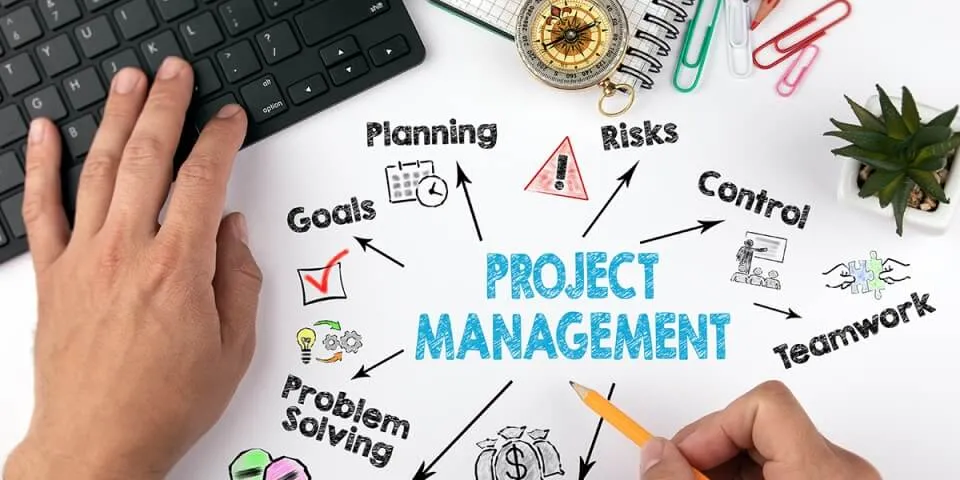It can be at times difficult to handle difficult web design clients but don't worry, we've got you covered! In this article, we will explore effective strategies for maintaining professionalism when dealing with challenging clients. By setting clear expectations, actively listening, and utilizing effective communication techniques, you can navigate through client demands and criticisms with ease.
We will also discuss how to manage scope creep, negotiate and compromise, establish boundaries, and solve problems efficiently. Get ready to enhance your professionalism and handle clients like a pro!
Key Takeaways
- Clearly communicate expectations and set realistic deadlines to avoid misunderstandings.
- Use active listening and empathy to understand client needs and concerns.
- Regularly update clients on project progress and address concerns to foster better communication.
- Establish a detailed project scope and actively listen to client needs to prevent scope creep.
Setting Clear Expectations
You should always make sure to clearly communicate your expectations to your clients to avoid misunderstandings. When managing timelines, it's important to set realistic deadlines and clearly communicate them to your clients. By doing so, you can ensure that both parties are on the same page and have a clear understanding of when each milestone should be completed. This will help you avoid any delays or frustrations down the line.
In addition to managing timelines, it's crucial to address client concerns promptly and effectively. When a client expresses a concern or raises an issue, it's important to listen attentively and understand their perspective. This will show that you value their input and are committed to addressing their concerns.
Once you have a clear understanding of the client's concerns, it's important to communicate your plan of action. Explain how you will address their concerns and provide a timeline for when they can expect to see progress. This will help alleviate any anxiety or uncertainty the client may have and demonstrate your professionalism and commitment to resolving any issues.
Active Listening and Empathy
Listening actively and showing empathy are essential skills for navigating challenging client interactions in web design. When dealing with difficult clients, it is crucial to use active listening techniques to fully understand their needs and concerns. This involves giving your undivided attention, maintaining eye contact, and using nonverbal cues to show that you are engaged in the conversation. By actively listening, you can gather important information and gain insight into the client's perspective.
In addition to active listening, empathetic communication is key to building a positive rapport with difficult clients. Empathy allows you to put yourself in their shoes and understand their emotions and motivations. It is important to acknowledge their frustrations and validate their concerns. By showing empathy, you can create a safe and trusting environment where the client feels heard and understood.
To enhance your active listening and empathetic communication skills, practice reflective listening. This involves paraphrasing and summarizing what the client has said to ensure that you have understood correctly. It also shows the client that you are actively engaged in the conversation and value their input.
Overall, active listening and empathy are crucial skills for handling difficult client interactions in web design. By using these techniques, you can foster better communication, build stronger relationships, and ultimately deliver a successful project that meets the client's needs.

Effective Communication Techniques
When dealing with web design clients, it's crucial to have clear client expectations and active listening skills. By clearly defining what the client wants and needs from the project, you can avoid misunderstandings and ensure a successful outcome.
Additionally, actively listening to the client's feedback and concerns will help you better understand their vision and address any issues that may arise during the design process.
Clear Client Expectations
It's important to clearly communicate expectations with clients to avoid any misunderstandings during the web design process. By setting clear expectations, you can ensure client satisfaction and a smooth project timeline. When discussing the project with your client, be specific about the deliverables, deadlines, and any potential limitations. Clearly outline the scope of work, including what is included and what is not. This will help manage their expectations and prevent any surprises down the line.
Regularly update your clients on the progress of the project, and make sure to address any concerns or questions they may have. By maintaining open and transparent communication, you can foster a positive working relationship and increase client satisfaction.
Additionally, by adhering to the agreed project timeline, you can demonstrate your professionalism and reliability.
Active Listening Skills
To improve your active listening skills, make sure to fully engage with your client. Maintain eye contact and nod or provide verbal cues to show that you are actively listening. This not only demonstrates your professionalism but also helps build trust and rapport with your client.
Additionally, using open-ended questions can encourage your client to share more information and feelings about their project. This allows you to better understand their needs and concerns. When your client expresses their thoughts or frustrations, respond with an empathetic response. Show that you understand and acknowledge their perspective.
Managing Scope Creep
Managing scope creep can be challenging, but it's important to clearly communicate project boundaries from the start. When dealing with difficult web design clients, it's crucial to effectively manage their requests and prevent project delays.
One way to achieve this is by establishing a detailed project scope and clearly defining what is included and excluded in the project. By doing so, you can set realistic expectations and avoid unnecessary additions or changes that may cause delays.
Additionally, it's essential to maintain open and frequent communication with your clients throughout the project. Actively listen to their needs and concerns, and address any potential scope creep issues promptly. By keeping the lines of communication open, you can prevent misunderstandings and address any changes or additions to the project in a timely manner.

Another effective strategy is to regularly review and assess the project's progress. This allows you to identify any potential scope creep early on and take necessary actions to prevent delays. By monitoring the project closely, you can ensure that the client's requests align with the agreed-upon project scope and make adjustments as needed.
Handling Feedback and Criticism
When receiving feedback and criticism, you should approach it with an open mind and be willing to consider different perspectives. Receiving feedback is an essential part of the web design process, as it helps you improve your work and deliver better results.
Constructive criticism, in particular, can be incredibly valuable, as it provides specific suggestions for improvement and highlights areas that may need attention. It's important to remember that feedback is not a personal attack but rather an opportunity for growth.
When you receive feedback, actively listen and try to understand the perspective of the person giving it. Take the time to reflect on their comments and consider how you can incorporate their suggestions into your work. Keep in mind that different people may have different expectations and preferences, so being open to feedback can help you create a design that meets the needs of your clients and users.
It's also important to maintain a professional attitude when receiving feedback. Avoid getting defensive or taking criticism personally. Instead, focus on the constructive aspects of the feedback and use it as a chance to learn and improve. Thank the person for their input and let them know that you appreciate their perspective.
Negotiating and Compromising
Negotiating and compromising are essential skills to cultivate in order to reach mutually beneficial agreements and find common ground in the web design process. When dealing with difficult clients, it's important to have effective negotiation strategies and compromise techniques in your arsenal.
Firstly, it's crucial to listen actively to your client's needs and concerns. By understanding their perspective, you can identify potential areas of compromise and find a solution that meets both their requirements and your design expertise. Additionally, being open to feedback and willing to make adjustments demonstrates your willingness to collaborate and find common ground.
Another effective strategy is to prioritize your client's most important requirements and focus on finding solutions that meet those needs. This allows you to make concessions in less critical areas while still delivering a high-quality end product.
When negotiating, it's essential to be clear and transparent about your own limitations and capabilities. By managing expectations from the start, you can avoid misunderstandings and potential conflicts down the line. Offering alternative suggestions and presenting options can also help facilitate compromise and find a middle ground that satisfies both parties.
Establishing Boundaries and Managing Difficult Personalities
Now that you've learned how to negotiate and compromise with difficult web design clients, it's time to focus on establishing boundaries and managing difficult personalities. In every client relationship, conflicts are bound to arise, and it's important to have strategies in place to handle them effectively.

One key skill to master in managing conflicts is assertive communication. This means expressing your needs, wants, and concerns in a clear and respectful manner, while also actively listening to the client's perspective. When conflicts arise, avoid becoming defensive or aggressive. Instead, take a calm and assertive approach, using 'I' statements to express how you feel and what you need.
Setting boundaries is another crucial aspect of managing difficult personalities. Clearly define your scope of work, project timelines, and communication channels from the start. This will help prevent misunderstandings and expectations that could lead to conflicts later on. When faced with a difficult client, be firm in enforcing these boundaries and address any issues promptly and professionally.
Problem-Solving and Troubleshooting
One crucial aspect of effectively managing conflicts with clients is mastering problem-solving and troubleshooting skills. When dealing with difficult web design clients, it is essential to have a toolkit of problem-solving strategies and troubleshooting techniques to address any challenges that may arise.
Start by actively listening to your client's concerns and understanding their perspective. This will enable you to identify the root cause of the problem and develop an appropriate solution. Use open-ended questions to gather more information and clarify any misunderstandings.
Once you have a clear understanding of the issue, brainstorm possible solutions. Think creatively and consider all options before deciding on the best course of action. Sometimes, it may be necessary to compromise or find a middle ground that satisfies both parties.
When implementing the solution, communicate clearly and effectively with your client. Set realistic expectations and provide regular updates on progress. Be proactive in addressing any issues or concerns that may arise during the implementation process.
Maintaining Professionalism and Ethical Standards
To effectively manage conflicts with clients, it's important for you to uphold high ethical standards and maintain a professional demeanor throughout the process. Ethical decision making plays a crucial role in resolving conflicts and maintaining a positive working relationship with your clients.
When faced with a conflict, it's essential to approach the situation with integrity and fairness. Consider the ethical implications of your actions and the potential consequences they may have on your client and your professional reputation. Make decisions that align with your values and adhere to ethical standards.
Conflict resolution requires effective communication and active listening skills. Seek to understand the concerns and perspectives of your clients, and express your own thoughts and ideas clearly and respectfully. Engage in open and honest dialogue to find common ground and mutually beneficial solutions.
Remember to remain calm and composed, even when faced with challenging situations. Emotions can run high during conflicts, but maintaining a professional demeanor is key to navigating through them successfully. Avoid personal attacks or defensive behavior, and instead focus on finding resolutions that meet the needs of both parties.

Frequently Asked Questions
How Can I Effectively Handle a Client Who Constantly Changes Their Mind About the Design Direction?
To effectively handle a client who constantly changes their mind about the design direction, you need to be proactive in managing their expectations. Communicate clearly, set boundaries, and offer options to help them make decisions more confidently.
What Strategies Can I Use to Avoid Scope Creep and Ensure That the Project Stays on Track?
To avoid scope creep and keep the project on track, use strategies to manage client expectations. Set clear project goals and deliverables, establish a thorough scope of work, and communicate regularly to prevent any misunderstandings or changes in direction.
How Should I Handle a Client Who Is Consistently Late in Providing Feedback or Necessary Assets?
When a client consistently delays feedback or assets, you can use strategies to manage the situation and maintain project flow. Techniques for handling unresponsive or uncooperative clients include setting clear expectations, gentle reminders, and open communication.
How Can I Negotiate With a Difficult Client Who Insists on Unrealistic Timelines or Budgets?
When negotiating timelines and managing budgets with a difficult client, it's important to clearly communicate the limitations and consequences. Explain the potential impact on quality and suggest alternative solutions to find a compromise.
What Steps Can I Take to Maintain Professionalism and Ethical Standards When Dealing With Challenging Clients?
To maintain professionalism and ethical standards with challenging clients, you should maintain boundaries and use conflict resolution strategies. By setting clear expectations, addressing concerns directly, and staying calm, you can navigate difficult situations while preserving your professionalism.
Conclusion
So there you have it! Dealing with difficult web design clients can be a challenging task, but by implementing these strategies and maintaining professionalism, you can navigate through any obstacles that come your way.
Remember to:
- Set clear expectations
- Actively listen and show empathy
- Communicate effectively
- Manage scope creep
- Handle feedback and criticism
- Negotiate and compromise
- Establish boundaries
- Problem-solve
Always maintain your professionalism and ethical standards. With these tools in your arsenal, you can successfully handle even the most difficult clients and ensure a positive and successful web design experience for both parties involved.

